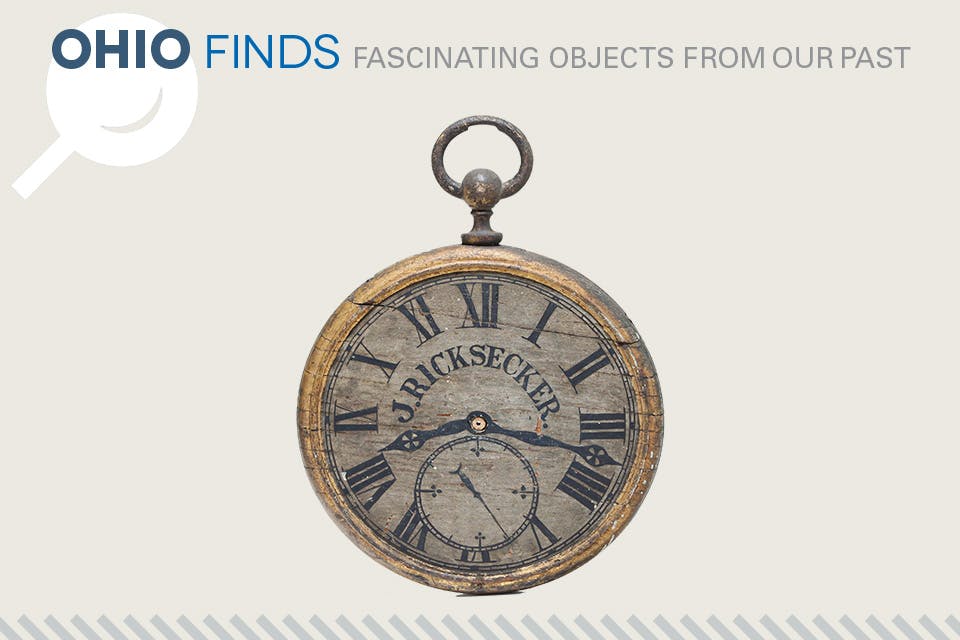Ohio Life
Ohio Finds: Jewelry Store Trade Sign
This example of a unique form of advertising during the late 19th and early 20th centuries was once installed outside a Factory Street business in Canal Dover.
Related Articles

Ohio Finds: Woven Coverlet
This item was made by Frederick E. Hesse in Logan, Ohio, in 1862. READ MORE >>

New Book Details Origins and Evolution of Dayton’s Carillon Historical Park
The destination’s vice president of museum operations Alex Heckman and curator Steve Lucht wrote the 222-page, hardbound coffee-table book. READ MORE >>

See ‘Heartland: The Stories of Ohio Through 250 Objects’ in Lancaster
The Decorative Arts Center of Ohio hosts an artifact-focused exhibition that tells the story of our state through a collection of family keepsakes and iconic inventions. READ MORE >>



